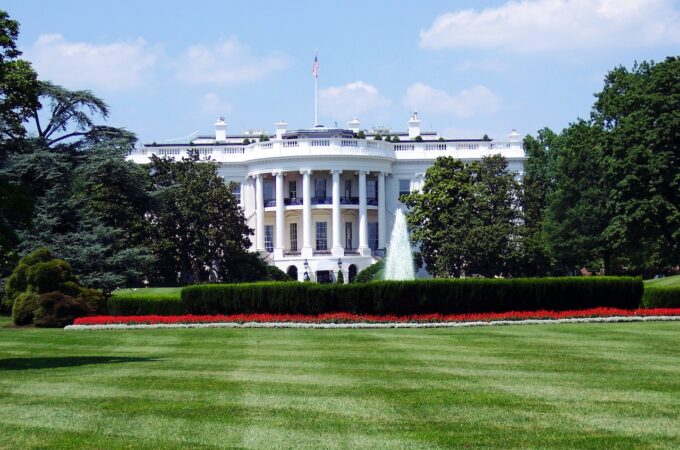
The current Indian Currency Demonetization is not a tectonic change by itself, but has the potential to usher in tectonic changes through sustained initiatives!
By Rajesh Dhuddu for LTP
The Government of India took a bold decision to demonetize INR 500 and INR 1000 notes and replace them with notes of newer denomination and also introduce notes of INR 2000. This herculean initiative, that involves exchange of Rs 14 lakh crores (USD 206 bn) was trending worldwide on the same scale as US election results. The gigantic effort to replace 2203 crore (22 billion) pieces of currency notes will easily make its entry into Guinness Book of records as the biggest exchange that human history has ever seen or will see in the future.
This exercise is being attributed by everyone as surgical strike on black money, cash, counterfeit notes and considered as a tectonic change in the Indian economy. I beg to differ that is not a tectonic change by itself. Ofcourse, this initiative definitely has the potential to usher in required changes through various sustained initiatives as illustrated below
- Make the currency completely traceable – There have been hushed reports that new notes to be issued by Reserve Bank of India (RBI) has an embedded technology where in the currency notes can be tracked by satellites. Albeit, this turned out to be a hoax. While governments across the world have been experimenting of embedding a RFID chip into currency notes, no one has introduced it yet. While crypto-currencies using Blockchain as an underlying technology have the potential to make currency fully track-able, we are not yet ready for an era where Indian Rupee will be ported fully onto the Blockchain network. Nevertheless there are reports of efforts being made by Philippines government to port Pesos onto the blockchain network whereby the Peso will metamorphose into an e-peso and it will be officially granted an electronic legal tender status. Since we are far away from these initiatives, there is a clarion need to undertake other initiatives in the interim
- Make all payments above Rs 2000 as mandatory electronic payments – I sincerely believe that this mandate is in the pipeline by Government of India. Keeping the threshold above Rs 2000 will not inconvenience the common man. As per the revised Below Poverty Line (BPL) definition of Planning Commission constituted in June 2014 per-capita income of less than Rs 1999 is treated as BPL. Roughly 38% of total Indian population (around 475 million / 47.5 crore people) come under this bucket. People belonging to segments other than this will easily adopt electronic payments provided the e-payment acceptance points increase significantly. In absence of this, the current initiative will at best be a temporary adjustment where in corrupt will write off their losses with ‘no cash back’ (read as returning cash back) to the banks and slowly meander back to their corrupt ways and end up stashing money either in small or bigger denominations as it suits them. Mandating all payments above Rs 2000 as compulsory electronic payments will create an electronic ledger of transactions and result in appropriate levy of taxes there by easing the tax burden on the current honest tax payers which currently accounts to an abysmal number of 1% of total population or just 1.61% of the population that is above the poverty line.
- Expand the horizon of electronic payments to small ticket and repeat purchases – Transportation in the country is still fairly controlled by Central and State Governments. Public transport expense is estimated to account for 20 to 30% of family income of the people using such transport. Government can easily mandate these payments only through electronic means. This could be through a mobile wallet, mobile airtime, where in hopefully the mobile led telcos that are venturing into payment banks can bring in this interoperability with the help of Government. The premise for such adoption is based on the adoption of mobile phones in India. If 103 crore (1030 million) eople in India with tele-density of 83% can buy airtime on weekly or monthly basis. They can also easily extend usage of that mobile phone / airtime for electronic purchases that too small ticket items.
- Make Mobile as Point of Purchase, Point of Sale and Point of Acceptance – The currently ‘in use of 1.2 million Point of Sale’ devices is grossly inadequate when compared to the requirement of 20 million PoS devices. Mobile phones have the great potential to address this huge gap and these phones need not be only smart phones. Features phones as demonstrated by M-Pesa in Africa and Bkash in Bangladesh can also play a significant role in accepting electronic payments. The national rail to accept such payments is ready in the form of Unified Payment Interface even through non smart phones. The National Unified USSD (read as flash message) Platform can facilitate fund transfer and is waiting to be leveraged.
In absence of the above integrated initiatives, we will neither be successful in eradicating black money nor reducing cash transactions significantly thereby losing the opportunity of saving close to 1.7% of India GDP translating to a whopping amount of Rs 2,15,000 crores which is the combined income of 107 crore poor people in India. And yes, we don’t want an encore of last few demonetization exercises in 1946, 1954 and 1978 that were completely suboptimal in eradicating black money.
First appeared at LTP





